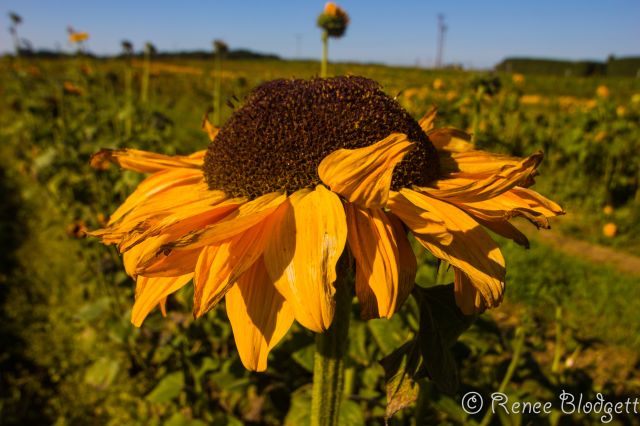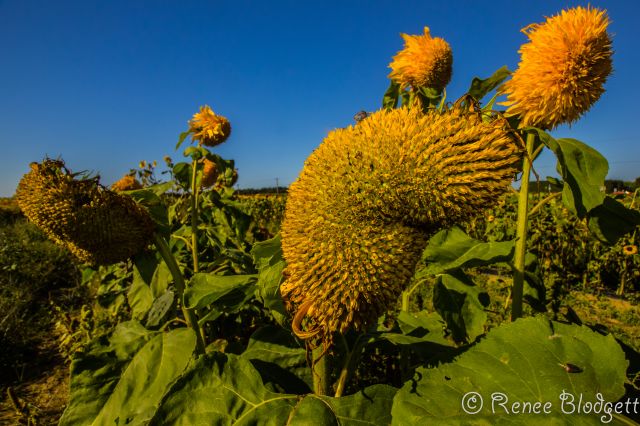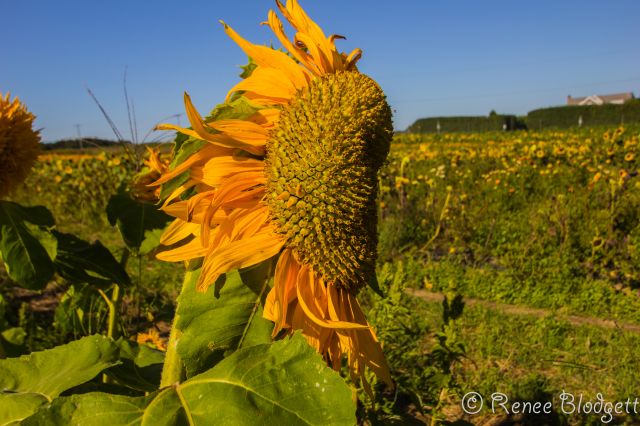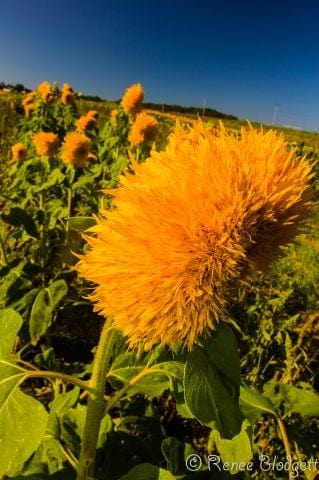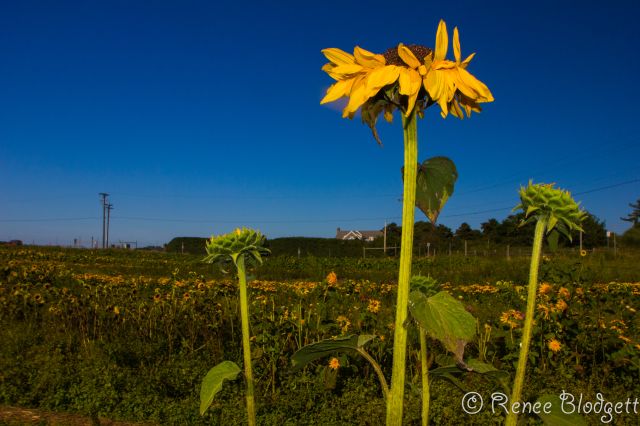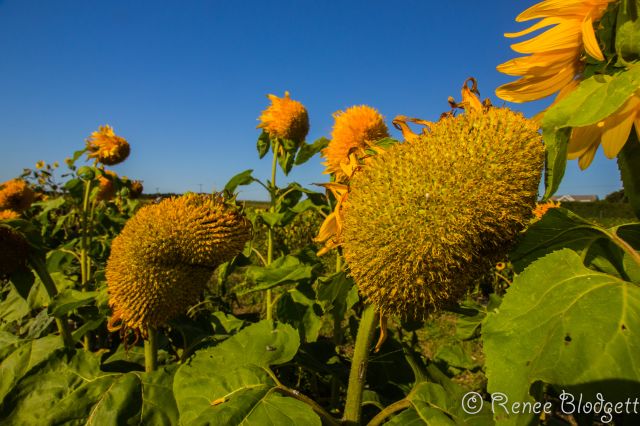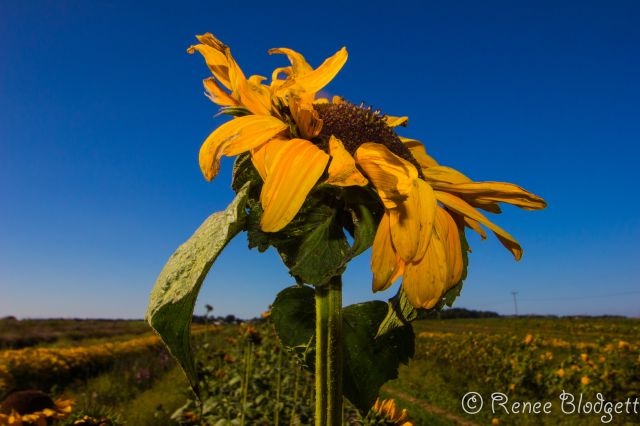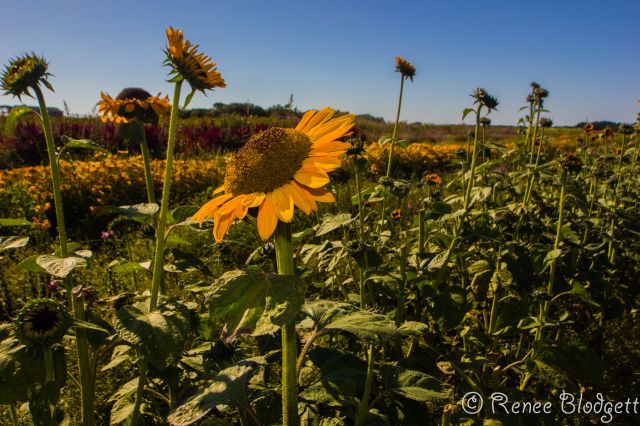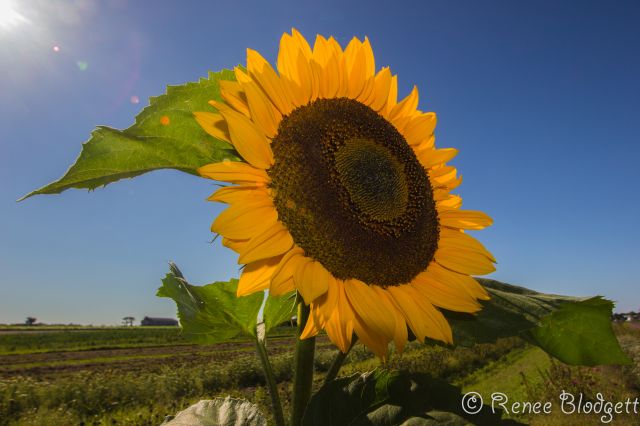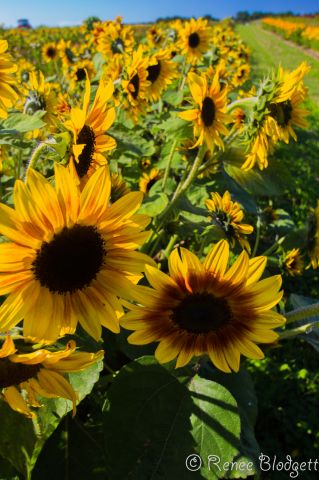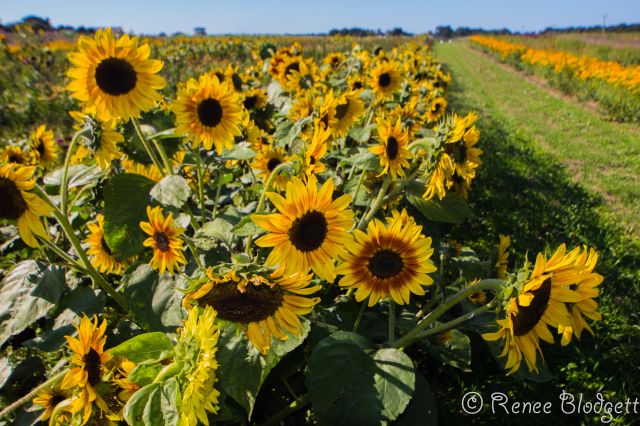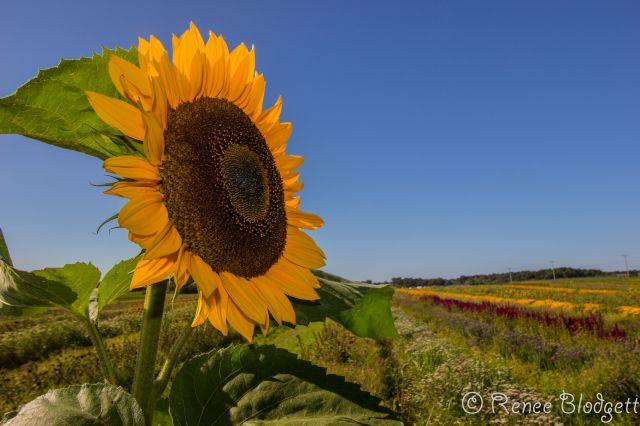For those of you who love sunflowers, you’ll likely know where you can see the best sunflowers in the world. Apparently Europe and Russia produce roughly 60% of the sunflowers in the world so it shouldn’t be any surprise that Eastern Europe in general has its fair share of beautiful sunflowers. I was blown away by a field of sunflowers a few years ago on my drive from Hungary to the Czech Republic through Slovakia. It was breathtaking.
And, I’ve been my fair share of sunflowers on a few continents now — Austria at the recent Night to Remember event in New York City I attended, even had a massive bouquet of sunflowers on the table as well as a giant photo of them on the wall depicting the same.
Late this past summer, I was taken aback as I drove past a field of sunflowers by bike on the island of Nantucket, some 30 or so miles south of Cape Cod Massachusetts. There were absolutely breathtaking. Have a look!
While sunflowers are popular in many parts of Europe, they are also native to Minnesota to Texas and California and perhaps also in Central and South America. Native Americans cultivated the plant and found many uses for it: the nutritious seeds were eaten raw, made into a meal, or used as a source of hair oil; a yellow dye was obtained from the flower heads, and a fiber from the stalks; the roots of certain other species were eaten.
Today the sunflower is widely cultivated; it is particularly valued in the countries of the former Soviet Union, where the seeds are made into bread. The seeds are almost universally used as a poultry food and principally as the source of an oil utilized for such purposes as cooking and soapmaking; the oil cake is fed to stock.
The sunflower is the state flower of Kansas, and a sunflower is regarded as the floral emblem of Peru, where it was revered by the ancient sun worshipers. Several other species are in cultivation—some are garden flowers; the Jerusalem artichoke is a food plant. In other words, its more tolerant to low temperatures although it is widely known to grow in both warm and cold climates.
Be sure to read my other independent post on Nantucket. Also, here are links to read all of our posts on Massachusetts, Boston and Cape Cod.

Renee Blodgett is the founder of We Blog the World. The site combines the magic of an online culture and travel magazine with a global blog network and has contributors from every continent in the world. Having lived in 10 countries and explored over 90, she is an avid traveler, and a lover, observer and participant in cultural diversity. She is also the founder of the Magdalene Collection, a jewelry line dedicated to women’s unsung voices and stories, and the award-winning author of the bestselling book Magdalene’s Journey
She is founder of Blue Soul Media and co-founder of Blue Soul Earth as well as the producer and host of the award-winning Blue Soul CHATS podcast, that bridges science, technology and spirituality. Renee also founded Magic Sauce Media, a new media services consultancy focused on viral marketing, social media, branding, events and PR. For over 20 years, she has helped companies from 12 countries get traction in the market. Known for her global and organic approach to product and corporate launches, Renee practices what she pitches and as an active user of social media, she helps clients navigate digital waters from around the world. Renee has been blogging for over 16 years and regularly writes on her personal blog Down the Avenue, Huffington Post, BlogHer, We Blog the World and other sites. She was ranked #12 Social Media Influencer by Forbes Magazine and is listed as a new media influencer and game changer on various sites and books on the new media revolution. In 2013, she was listed as the 6th most influential woman in social media by Forbes Magazine on a Top 20 List.
Her passion for art, storytelling and photography led to the launch of Magic Sauce Photography, which is a visual extension of her writing, the result of which has led to producing six photo books: Galapagos Islands, London, South Africa, Rome, Urbanization and Ecuador.
Renee is also the co-founder of Traveling Geeks, an initiative that brings entrepreneurs, thought leaders, bloggers, creators, curators and influencers to other countries to share and learn from peers, governments, corporations, and the general public in order to educate, share, evaluate, and promote innovative technologies.

